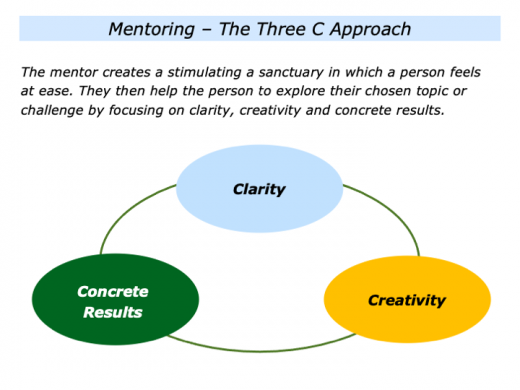
There are many ways to encourage people. One approach is to act as a mentor and pass on knowledge that helps people to succeed.
Mentoring is a huge subject. So let’s start by considering some of the frequently asked questions about mentoring and coaching.
What do mentors do?
Mentors are wise and trusted advisors. They share knowledge in a way that helps the mentee to achieve their personal or professional goals.
Many successful people use mentors. Why? They sometimes like to meet with a third party who helps them to get an overview of a situation. They can then explore their possible options, make decisions and chart their route forwards.
The word mentor comes from Homer’s epic poem The Iliad. When Odysseus left to do battle in Troy, he asked a man called Mentor to take care of his son, Telemachus.
Rumour has it that Mentor was not always up to the task. The Goddess Athena therefore assumed his form and made him strong and wise.
Why do organisations use mentoring?
Mentoring plays a key role in nurturing talent. It provides benefits for the organisation, the mentees and the mentors.
The benefits for the organisation include creating an encouraging environment, passing on wisdom and helping people to make good quality decisions. It can also act as a good retention tool.
The benefits for the mentee include feeling encouraged, making good decisions and shaping their future career. They also expand their repertoire of knowledge and get practical tools they use to achieve success.
The benefits for the mentor are that they will clarify their knowledge, because the best way to learn is to teach. They will also learn more about what is happening in their organisation and may get energy from their mentees.
What is the difference between
mentoring and coaching?
There are many views on the difference between mentoring and coaching. These views can also differ in different parts of the world and different cultures.
This brings us to the important point. When introducing mentoring into a culture, it is vital that people understand the organisation’s definitions. This does not mean that one view is right and another is wrong.
People simply need to be clear about what mentoring is and what it isn’t in their organisation. They then know what they can and cannot expect from a mentoring session.
This piece focuses on the definitions that one organisation gave regarding mentoring and coaching. (Some organisations actually reverse the columns described below.) Everybody was clear on the differences, however, and knew how to make the best use of the sessions.
One key point is worth mentioning. The two columns outlined above come with a caveat.
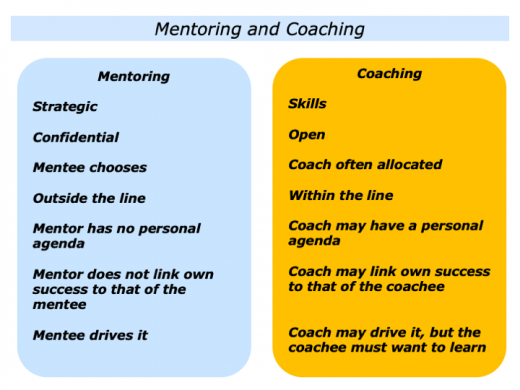
The mentor’s role is to pass on knowledge and practical tools the mentee could use to achieve success. This means that sometimes the sessions help the person to add to their repertoire of skills for achieving their strategic goals. The two columns can, however, prove to be a useful guide for people.
What are the responsibilities
of the mentor and the mentee?
The mentor’s responsibility is, first and foremost, to make sure they really want to be a mentor. Mentoring is rewarding, but doing it properly can also be time consuming.
After familiarising themselves with the organisation’s approach to mentoring, it is to facilitate the sessions and pass on their knowledge in a way that the mentee can use to achieve success.
The mentee’s responsibility is to be proactive in setting-up the sessions, prepare properly and make the best use of their session with the mentor.
Building on these definitions, the organisation can include the following points in their mentoring charter. These make sure the mentees knows what they can and cannot expect from the sessions.
The mentor’s role is to focus on the mentee’s agenda, to act as a confidential sounding board and to pass on tools the mentee can use to achieve their goals.
The mentor’s role is not to act as a political door opener, to replace management or to communicate confidential information about people.
The charter can include both the mentor’s and mentee’s responsibilities. These can be outlined in the following ways.
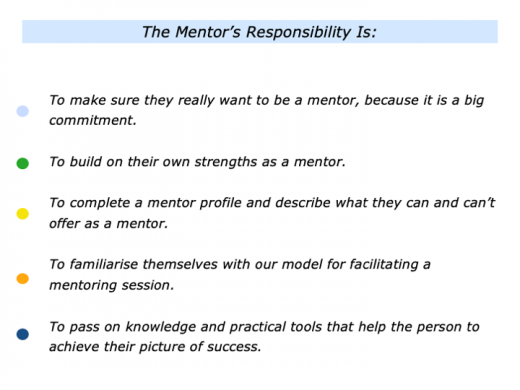
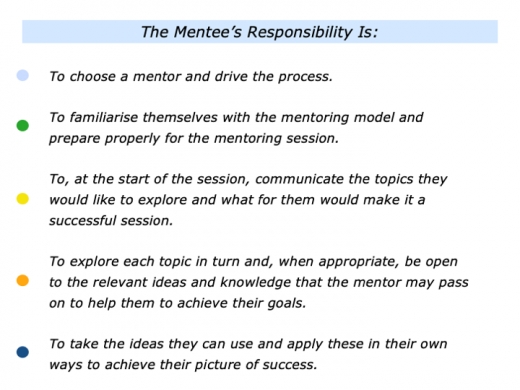
What are the qualities
demonstrated by good mentors?
Good mentors often demonstrate some common characteristics. How to identify these qualities? One approach is to look back at your own experience of being mentored.
When doing mentoring programmes, for example, I invite each person to do the following exercise.
Describe somebody who acted as a good mentor for you in your personal or professional life.
Describe the specific things they did right – the principles they followed – to be a good mentor for you.
Describe the specific things you can do to, if appropriate, follow some of these principles – plus maybe add other skills – to be a good mentor for other people.
Here are some of the common themes that emerge when people do this exercise.
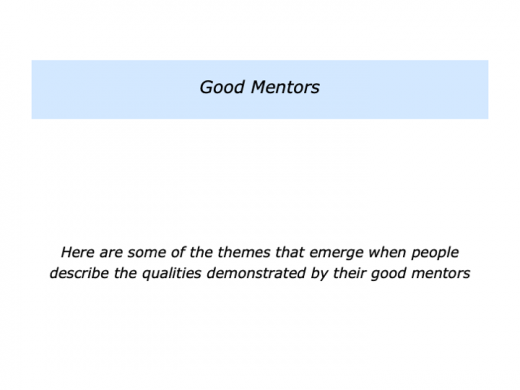
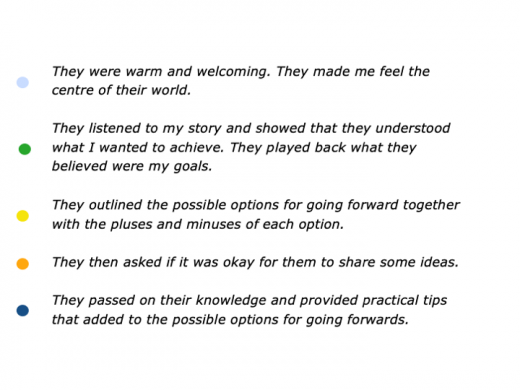
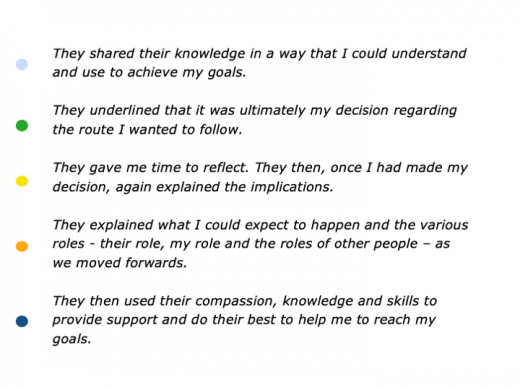
Preparing Properly
Good mentors prepare properly for the session. They aim to find out what they can about the mentee, what is happening in their world and the possible themes the person may wish to explore.
The following pages describe some of the themes that the mentor may explore when thinking about the mentee. This is followed by an exercise they sometimes use to summarise their findings and how they can help the person to succeed.
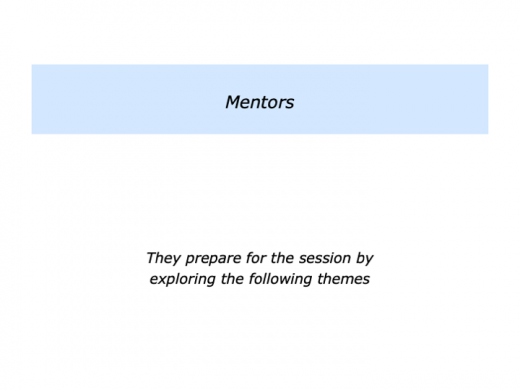
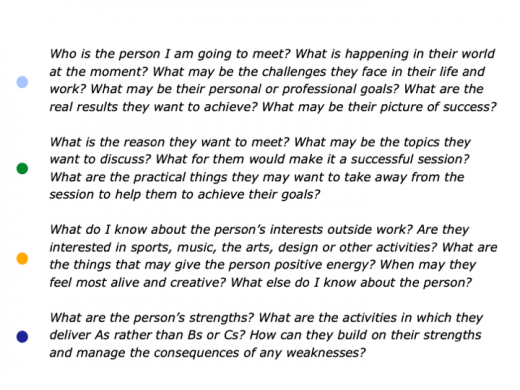
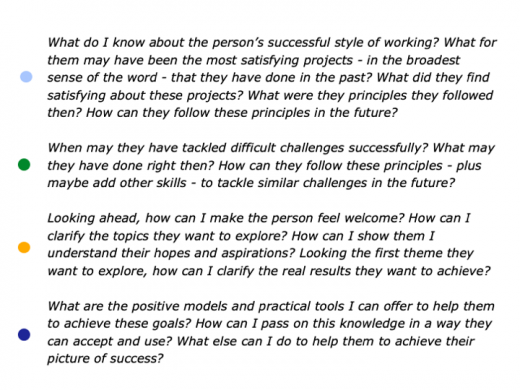
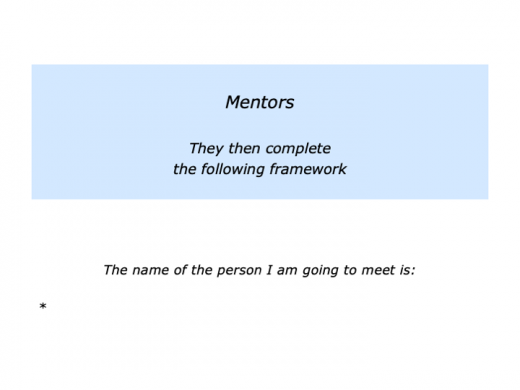
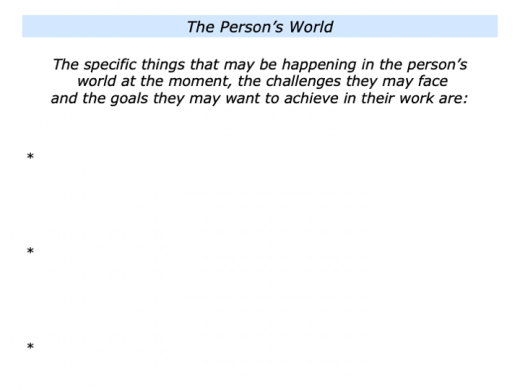
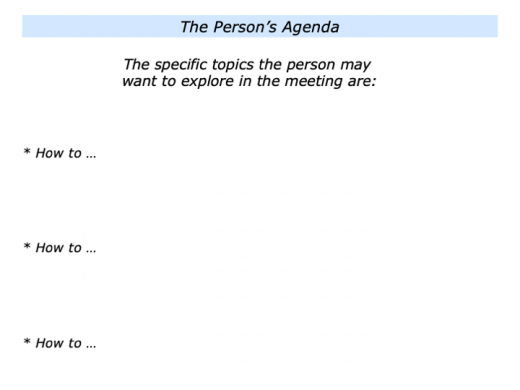
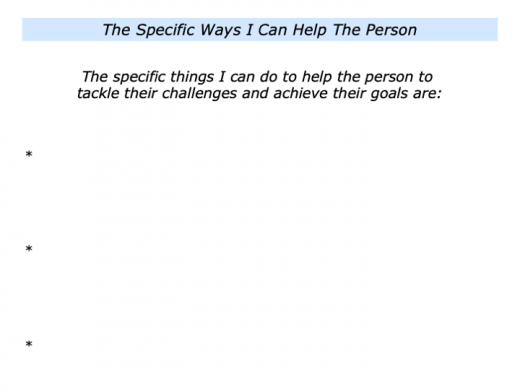
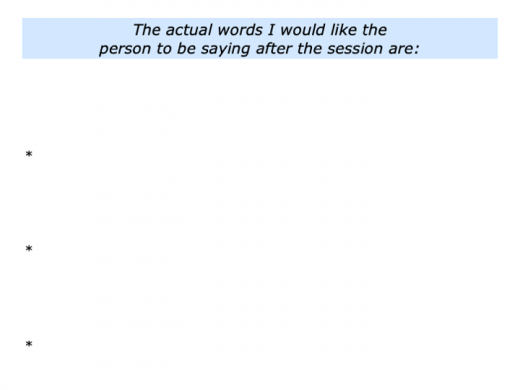
Contacting the person
before a first session
Imagine that you have done your preparation. If appropriate, you may want to send an email before the first session.
This can help to set the scene for the person. It can also give them the chance to reflect and think about what they want to explore in the session.
Looking at my own work, here is an example of the kind of email I may send to a person before the first session. You will, of course, have your own approach.
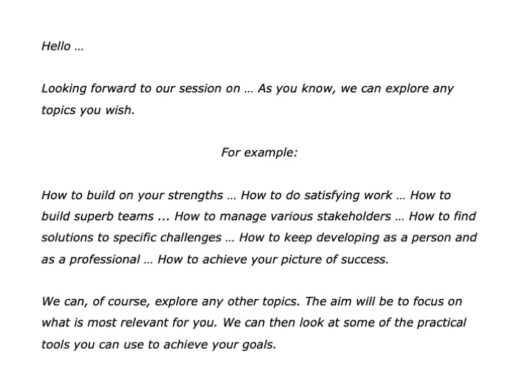
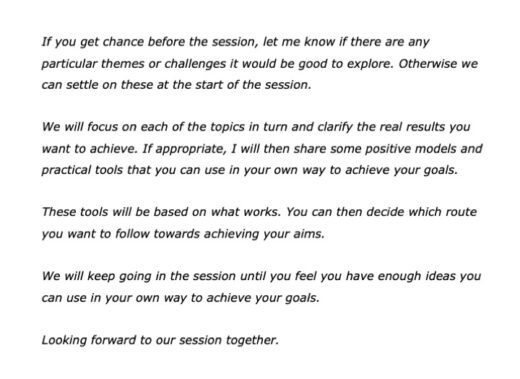
The Mentoring Session
There are many models for running a mentoring session. The section describes how you can use the Three C approach.
This helps people to tackle challenges or reach their goals by focusing on Clarity, Creativity and Concrete Results. You will, of course, use the model that works for you and the mentee.
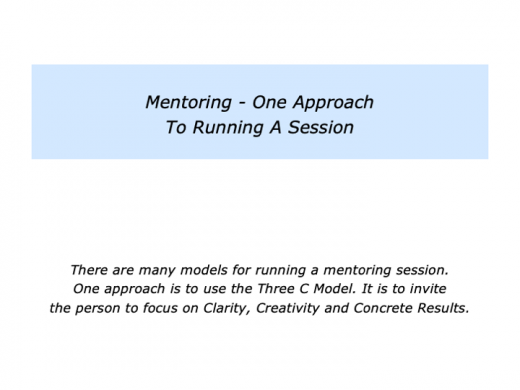
Setting The Scene
Imagine that you are running a mentoring session. You will start by creating a stimulating sanctuary in which the person feels at ease and able to explore their chosen themes.
Here are some of the things you may want to say when clarifying the person’s challenges or aims. You will, of course, do this in your own way.
“Welcome to the session. As you know, we can focus on any topic that you would like to explore. We can look at how to tackle specific challenges or achieve your particular goals.
“Once we have settled on the first topic, I will probably ask you lots of questions to build up the picture. Then, if is it okay by you, I will share some ideas and practical tools that you can use in your own way.
“Let’s begin by seeing things in context. What is happening in your world at the moment? Are there any particular challenges that you face? Are there any particular goals that you would like to work towards?
Different people will focus on different themes. Here, for example, are some of the questions that people have wanted to explore in our mentoring sessions.
How can I take the next step in my career? How can I feel more in control of my life and work? How can I help my son to deal with school, even though his interests lie elsewhere?
How can I get on better with my manager? How can I turnaround a difficult team? How can I set-up and run my own successful business? How can we build a values driven organisation?
Imagine that the person has described several themes they want to explore. You can then make clear contracts about the areas to cover during the session.
Good mentors know their strengths and areas of expertise. So, after listening to the topics the person wants to explore, you may want to say something along the following lines.
“Looking at the various topics you have outlined, I can offer ideas and practical tools on the following themes:
* How to …
* How to …
* How to …
“Looking at another of the themes you have mentioned, whilst I can offer ideas, I think it may be advisable to explore those with another person or professional. Is that okay?
“Bearing that in mind, which is the first topic you want to explore? As I mentioned earlier, I will ask you some questions about this topic. We will then focus on how to achieve your goals. Is that okay?”
The next step will be to focus on the first topic the person wants to explore. You can help them to do this by working through the following stages.
Clarity
Clarity is crucial. It is important to clarify the real results the person wants to achieve – the real What – before moving on to the How. Dare to spend a long time on this stage. You can do this by working through the following steps.
Challenges
Imagine that the person has described a challenge they want to explore. It is important to frame this in positive terms. For example:
“How can I stay healthy?” rather than “How can I stop smoking?”
It can also be useful to frame the challenge in terms of “How to …?” or ‘How can I …?” This also encourages them to begin using their imagination to generate solutions. For example:
“How can I feel more in control?” rather than “How can I stop feeling stressed?”
If appropriate, you can then invite the person to give more background about the situation. This can help when focusing on their priorities. Bearing this in mind, invite them to focus on the following themes.
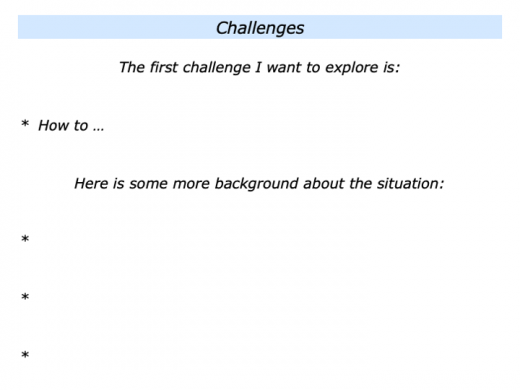
Controllables
Let’s assume the person has focused on the challenge they want to explore. Before pitching into finding solutions, however, it is good to do a reality check.
Peak performers aim to control the controllables. They can, for example, control their attitude, professionalism and other things. They can’t necessarily control the outcome of their efforts. They can, however, do their best to influence it.
Such people build on what they can control and manage what they can’t. The same rule applies to your client. Bearing in mind the challenge they want to tackle, invite them to describe the things they can control in the situation.
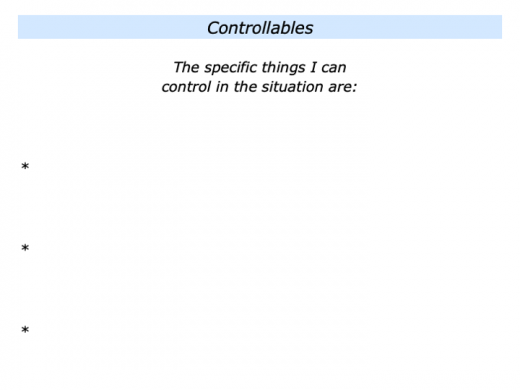
Clarity
You can then clarify the real What before moving on to the How. A person often starts by presenting their view of How they can tackle an issue. But it is useful to clarify their picture of success.
Bearing this in mind, start by looking at the first challenge the person wants to tackle. Ask them:
“What are the real results you want to achieve?”
Sometimes this process takes a little time, but it is a vital step in creative problem solving. Here are some examples of how a person’s original topic can change during the process of exploring the real results they wanted to achieve.
Person A originally said: “How can I get promotion in my company?”
They settled on: “How can I build a satisfying career where I do stimulating work and get a good salary?”
Person B originally said: “How can I as a leader turn around difficult people in my organisation?”
They settled on: “How can I build a successful organisation?”
Person C originally said: “How can I deal with my manager who insists on micro-managing me every day?
They settled on two things: “How can I deal with the present situation by behaving professionally towards my manager and delivering positive results? How can find a rewarding role where I work with a manager whom I respect?”
Sometimes the person may want to achieve lots of things related to their chosen topic. If so, clarify all their goals and list these in order of priority. The person may, for example, have both short and long term aims. You can work to help them to achieve these goals.
Imagine you are helping a person to tackle a specific challenge. Invite them to do two things. First, to clarify the real results they want to achieve. If appropriate, brainstorm all these goals. Second, to list these results in order of priority.
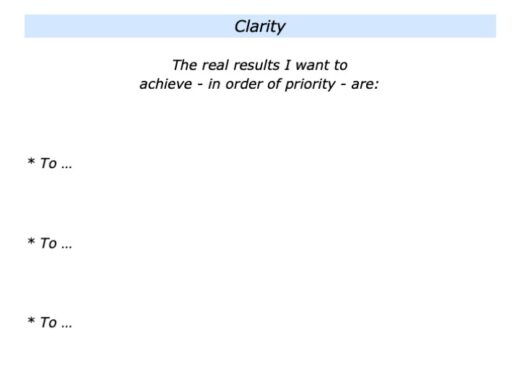
So far the person has clarified the challenge, the controllables and the results to achieve. It’s now time to move on to the possible creative solutions.
Creativity
Move on to encouraging the person to look at how to achieve their goals. This often involves going through the process of exploring the choices, consequences and creative solutions.
Choices
Bearing in mind the goals they want to achieve, invite the person to explore all the possible options they can pursue. These can range from the obvious options – such as maintaining the status quo and doing nothing – to the more outlandish ones.
It’s important to list all the options – even the ones they are not going to pursue – to consider the whole picture. This provides the whole context for choosing their way forward. So invite them to outline the following choices. (There may, of course, be more than three options.)
Option A is: To …
Option B is: To …
Option C is: To …
Consequences
Looking at each option in turn, invite the person to consider what they see as the respective pluses and minuses of each route.
Great decision makers often base their decisions on the consequences of each option, rather than the options themselves. They then build on the pluses and minimise the minuses.
Invite the person to outline the various options. They can then rate the attractiveness of each option on a scale 0–10.
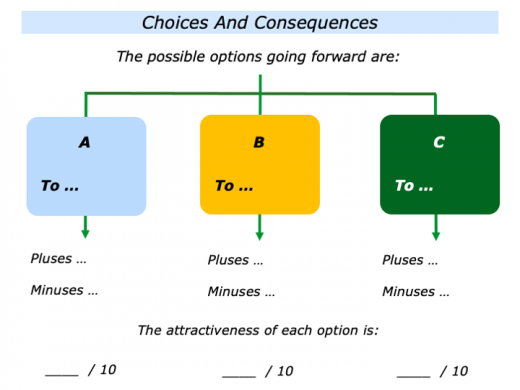
Creative Solutions
Looking at the goals the person wants to achieve, are there any other possible options? This is where mentors earn their corn. They pass on their knowledge in a way the client can accept and use.
You may want to begin by recapping what has been covered so far in the session. When appropriate, however, you can ask the person: “Is it okay for me to share some ideas?” They will probably say: “Yes.”
Let’s assume the person would welcome your ideas. You can share these in a way that gives them the chance to take the best and leave the rest. Look for the ideas that resonate.
Good mentors ‘sit alongside’ the person and look together at the goals they want to achieve. They then share possible ways the person can achieve these aims. They do, when appropriate, also offer practical tools the person can use in their daily life or work.
Let’s look at how this works in practice. Imagine you are helping a person to explore their potential options. You will do this in your own way, but you may say something along the following lines.
“Let’s start by re-establishing your goals. As far as I understand it, the real results you want to achieve are to … Is that right?
“Let’s look at the different options you have outlined. Which of these is the most attractive option?
“Looking at the various options, is it possible to take the best parts of each route and create a new road?
“Sometimes it can be useful to learn from our own successes. Looking back, have you ever been in a similar situation before and managed it successfully? What did you do right then? Is it possible to follow any of these principles to achieve the goals?
“Sometimes it can be useful to learn from how other people have succeeded. Are there any other people, teams or organisations that have tackled this kind of issue successfully? What did they do right then? How can you follow these principles in your own way?
“Is it okay for me to share some ideas? If so, looking at the goals you want to achieve, here are some options you may wish to consider.
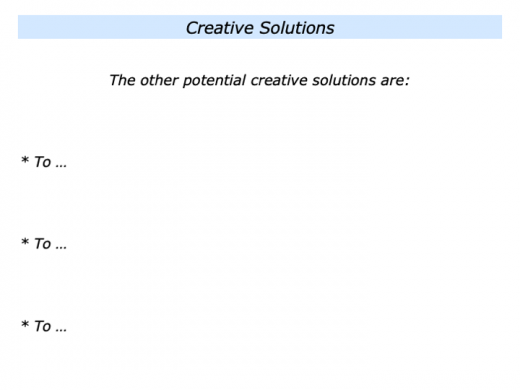
“Looking at all the options, which are the ones that make sense? Which of these would you like to explore further? Looking at your chosen option, let’s consider how these might look in practice.
“Looking at all the things we have explored, let’s summarise things before moving on to the next stage. Looking at the goals you want to achieve, let’s consider the following question.
“What do you believe are the three things you can do to give yourself the greatest chance of success?”
Invite the client to keep going until they feel they have explored all the possible options. They can then move onto the final stage.
Concrete Results
It is then time to translate the ideas in action. The person can do this by going through the following stages.
Conclusions
Looking at the various ways forward, they can settle on the route they want to follow. Sometimes they will choose to pursue one main option; sometimes they will want to pursue multiple options. What will be the pluses and minuses involved? How can they build on the pluses and minimise the minuses?
Looking at the results they want to achieve, invite them to complete the following sentence.
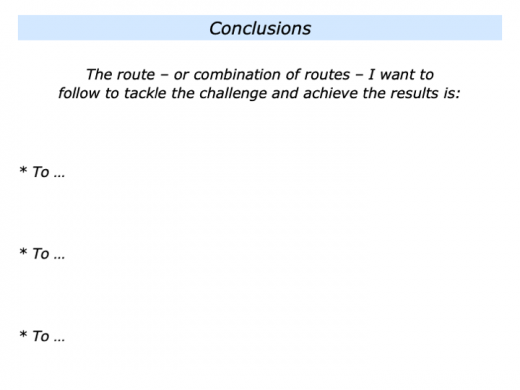
Contracting
Looking at the road ahead, invite the person to consider if they need to make any contracts with people.
Their main contract, of course, is with themselves. Looking at the whole package – the pluses and minuses involved – do they want to make the commitment to achieving the goals?
They may also need to make clear working contracts with other people who can help them to reach the goals. In appropriate, invite them to complete the following sentence.
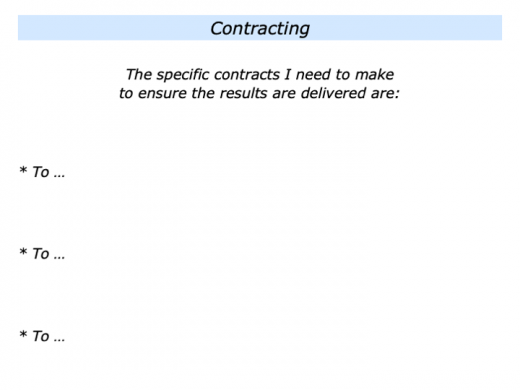
Concrete Results
Different mentors choose different ways to conclude each part of the session. Whichever route you take, it is important to take your cue from the person with whom you are working.
Sometimes the person may want to reflect before clarifying their next steps. Sometimes they may want to move straight to action planning. If the person wants to take the latter route, you can invite them to complete the following step.
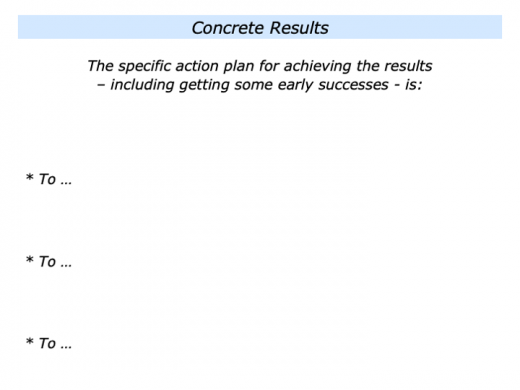
How to finish the session? One approach is to ensure that you have covered the agreed themes. It is also to check that the person has got some practical tools they can use to achieve their goals.
Sometimes at the end of a session a person will say they want to reflect on the ideas. This may especially be so with introverts who prefer to let the ideas sink in. Sometimes, however, a person may have a clear action plan they want to follow.
One approach you can use – but only if it is appropriate – is to invite the person to clarify what they have learned, relearned or what they are taking away. This can help to finish the session in a positive way. Here is a framework they can use for clarifying their learning.
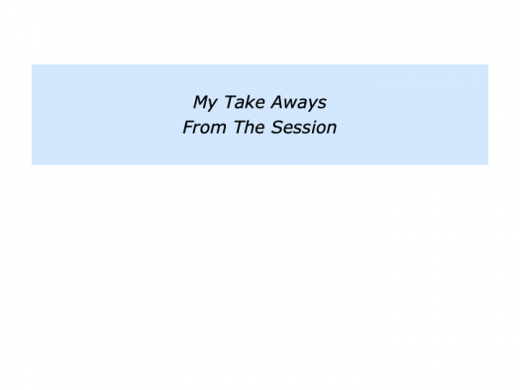
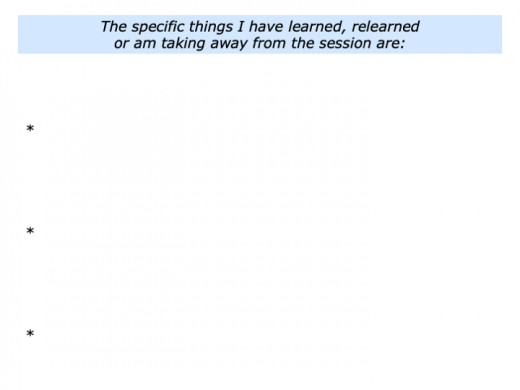



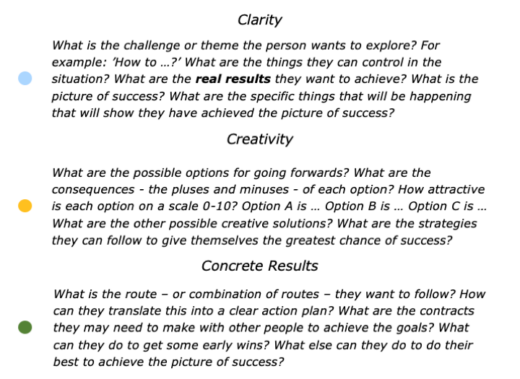




Leave a Reply